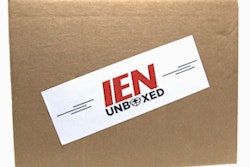Direct Store Delivery (DSD) has become a standard model for maintaining retail inventory levels of perishable food and beverages or demand frequent restocking for product freshness. The practice means the product is delivered directly to the retailer by a supplier — bypassing a central distribution center or warehouse. By bringing goods directly to the store and avoiding the added step of a distribution center, suppliers and their delivery operations must be constantly connected with the retailers and be able to respond and deliver goods almost on-demand. Ideally drivers are updated and often re-routed in real-time based on retailers requests on an as needed basis. By communicating directly with retailers, suppliers get better insight into inventory levels which in turn can drive sales growth.
However, by interfacing with the store directly, suppliers now must also take on tasks that would otherwise be completed by the logistics and distribution center team. Such tasks include inventory management, delivery scheduling and tracking, as well as capturing proof of delivery. Today these tasks are usually completed using a mobile device and as more suppliers are discovering, mobile tablets and handheld devices are an ideal fit for the job. But with so many mobile device choices on the market today, it can be difficult to determine which type and model makes the most sense. In order to help make the selection process easier, we put together a list of the top five features to consider when evaluating mobile devices for DSD needs.
1. Ergonomic Scanning: Inventory management and identification are at the heart of DSD and the devices used by delivery drivers must be able to quickly and accurately scan product barcodes or RFID tags and send data updates in real time. Mobile devices that integrate barcodes and RFID tag reading capabilities into the same unit used for all the other tasks the driver needs to accomplish in a day simplify the job. Look for handhelds that include an angled scanner so the driver can scan and use the touchscreen at the same time to increase efficiency.
2. Battery Life: With the need to have real-time, constant connectivity and communications, as well as running multiple applications and delivery routes that can go beyond the standard eight-hour workday, extensive battery life is critical for delivery drivers. Consider devices that have extended high performance operation batteries. Drivers need to be able to rely on the battery in their mobile device to last throughout the day, in and out of stores as well as their vehicles without having to remember to plug in and charge while on the go. Rugged devices with high capacity and user-replaceable batteries extend the device’s useable life, reduce waste, and prevent a disruption to workflow. Opt for rugged mobile handheld tablets that provide approximately 12 to 16 hours of battery life so that drivers can make it through all the day’s deliveries without the worry of a dead battery.
3. Reliability: Device reliability under basic consumer usage is the norm today, but device reliability when used by delivery drivers for eight or more hours a day requires purpose-built devices for field workers. Rugged mobile devices that can withstand the accidental drops and bumps that can happen in the fast-moving DSD environment. With the need for digital signature capture or other digital forms of delivery confirmation, a non-functioning device is simply not an option. When considering technology your workers will rely on out in the field, it is important to evaluate features like wireless connectivity to ensure you can count on your mobile device when you need it most. Be sure to ask about product failure rates when selecting a mobile device and look for those with the lowest rates.
4. Superior Connectivity: Drivers are constantly on the move and while on the road from location to locations, may find themselves in locations that have poor connectivity. However, their apps still needed to communicate their location and receive updated delivery information. Research how devices are engineered and manufactured, as there are devices that have specially designed antennae that are better able to connect wirelessly even in harsh conditions. This design will keep drivers on schedule and inventories up to date.
5. Security: With retailer account and payment data at stake, suppliers must implement stringent security features in order to ensure this sensitive information is kept safe. While many device manufacturers now tout their devices as secure, look for third party validation through standards bodies such as the National Institute of Standards and Technology’s FIPS (Federal Information Processing Standard) 140-2 certification.
The DSD model continues to grow and the demand for mobile solutions that fit this specific market’s requirements are becoming better defined. Suppliers are quickly learning that basic smartphones fail to stand up to the job. More rugged, multi-purpose tablets and handhelds offer a better fit.
Jim Dempsey is an Enterprise Business Development Manager at Panasonic.























